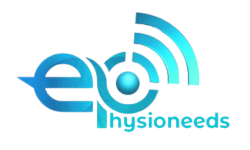Introduction:
At Physio Needs Academy, we believe in providing compassionate care for infants and children facing the challenges of infantile hemiplegia—a condition resulting from brain injuries occurring before or during birth, leading to the total paralysis of one side of the body, including the face, arm, and leg. This rare neurological condition typically manifests in children under the age of 4. Let us explore the various aspects of infantile hemiplegia, including its causes, clinical features, diagnosis, and management.
Understanding Infantile Hemiplegia:
Infantile hemiplegia is often caused by vascular accidents such as cerebral infarction or thrombosis and is associated with seizures. It is essential to provide a compassionate and supportive environment for children affected by this condition.
Causes of Infantile Hemiplegia:
Several factors can contribute to infantile hemiplegia, including:
- CNS infections (e.g., encephalitis, meningitis, and abscess).
- Neoplastic intracranial space-occupying lesions.
- Trauma.
- Developmental anomalies of the brain.
- Congenital heart disease.
- Purulent venous thrombosis.
- Sickle cell anemia.
- Homocystinuria.
Clinical Features:
Infantile hemiplegia presents a range of clinical features, including:
- Pain
- Muscle spasms
- Difficulty in gait and balance
- Emotional distress
- Hemiplegia (paralysis of one side)
- Epilepsy
- Mental changes
- Various movement-related challenges:
- Persistent posturing and patterning movements
- Stiffness in movements
- Floppiness and weakness
- Limited useful range of movement
- Intellectual difficulties or motivation issues
- Central sensory deficits
Diagnosis:
To diagnose infantile hemiplegia, medical professionals typically perform a series of diagnostic tests, including:
- Complete blood count
- Blood biochemistry tests
- Cranial CT scans
- Cranial MRI scans
- Electroencephalograms (EEG)
- Doppler ultrasounds
Compassionate Management:
Our compassionate approach to managing infantile hemiplegia involves a combination of therapies and techniques, including:
- Conventional Therapies:
- Therapeutic exercises
- Traditional functional retraining
- Range of motion exercises
- Muscle stretching exercises
- Splinting
- Fitness training
- Compensatory techniques
- Bed Positioning:
- Techniques for lying on the affected side
- Techniques for lying on the unaffected side
- Neurofacilitatory Techniques:
- Bobath approach: Focused on controlling responses from damaged postural reflex mechanisms.
- Rood approach: Emphasizes developmental sequences, sensation stimulation, and muscle work classification.
- Proprioceptive neuromuscular facilitation (PNF): Advocates the use of peripheral inputs to reinforce existing motor responses.
- Learning Theory Approaches:
- Conductive education
- Motor relearning theory: Emphasizes the practice of functional tasks and relearning real-life activities.
- Biofeedback: Facilitates awareness of muscle activity or joint position sense.
- Functional Electrical Stimulation:
- Reduces spasticity in hemiplegic patients by applying short bursts of electrical current to muscles or nerves.
- Conventional Gait Training:
- Focuses on part-practice of gait components in preparation for walking.
- Includes various exercises and techniques to improve gait and mobility.
Conclusion:
At Physio Needs Academy, our compassionate care approach prioritizes the well-being and recovery of children facing infantile hemiplegia. We provide individualized treatment plans that combine therapeutic exercises, neurofacilitatory techniques, and learning theory approaches to improve mobility, function, and overall quality of life for our young patients. Join us in supporting these children on their journey to a brighter future.

